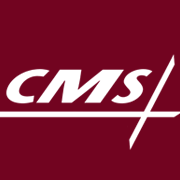CMS: Rural Healthcare Faces Hospital Revenue Cycle Challenges
CMS plans to bolster rural healthcare by alleviating hospital revenue cycle issues, such as physician shortages, hospital closures, and high uninsured rates.

- In a statement at the CMS Rural Health Summit yesterday, CMS Acting Administrator Andy Slavitt identified rural communities as one of the biggest opportunities for healthcare reform because rural areas face more hospital revenue cycle challenges, including hospital closures, physician shortages, and higher uninsured rates.

“Each is a small step but there’s an increasing consciousness to reduce the burden and the cost,” said Slavitt. “I know big administrative and legislative priorities remain on your list and there is always more we can do. But in addressing economics, we must have a dialogue about the longer term economics and allocation of resources in rural communities.”
Slavitt stated that hospital revenue cycle issues, including razor-thin operating margins, higher uncompensated care costs, fewer private payer options, and lower utilization rates, have contributed to more hospital closures in rural areas. Since 2010, 78 rural hospitals have shut their doors.
Healthcare employment problems, such as physician shortages, have also driven care disparities in rural communities, Slavitt added. Even though 20 percent of the population resides in a rural area, only 10 percent of physicians practice in these regions. The lack of providers in rural areas represents 65 percent of the healthcare professional shortage.
To make up for physician shortages, physician assistants and nurse practitioners ended up carrying more of the primary care workload, whereas the same healthcare professionals in urban settings only took on eight percent of the primary care workload.
Rural areas also experienced specialist shortages, especially for behavioral health, Slavitt stated. One in eight rural counties does not contain a behavioral health specialist and those counties that do have them only have one-third to one-half of the levels versus more urban settings.
“Access to specialists is one of the biggest challenges, and that becomes more important as the health needs of the population become more complex,” Slavitt remarked. “With prescription drug abuse, increasing suicide rates, and the opioid epidemic taking its toll, our shortages of psychiatrists and psychologists– a problem everywhere– are deeper in rural counties.”
Slavitt also stated that higher uninsured rates in rural areas compounded hospital revenue cycle challenges that are more common in rural communities, such as lower patient volumes, an aging population, limited care delivery infrastructure, higher chronic disease rates, and greater treatment needs.
CMS developed Medicaid expansion options for states to lower uninsured rates, but Slavitt noted that most entirely or almost entirely rural states have elected to not implement Medicaid expansion. While the uninsured rate in rural areas that have expanded Medicaid is 11 percent, non-Medicaid expansion states have a 14.6 percent uninsured rate.
Without Medicaid expansions, insurance costs also rose by seven percent for beneficiaries, causing healthcare insurance markets to be less competitive.
CMS has taken several steps to resolve rural healthcare issues, such as the development of the Rural Health Council. Earlier this year, CMS established a council of experts from across the agency to gather feedback on how to improve rural healthcare and develop strategic plans to implement improvements.
The Rural Health Council plans to address limited access to care, hospital revenue cycle issues, and healthcare innovations tailored to rural healthcare markets.
“Our initial focus is on access to care, the economics of care and innovations that fit right with the opportunities and needs in rural America,” Slavitt said.
The federal agency has also sponsored several other healthcare reform initiatives for rural providers and patients since the Affordable Care Act, Slavitt added. For example, healthcare coverage programs under the Affordable Care Act contributed to a 39 percent decrease in uninsured adults in non-metropolitan areas between 2010 and 2015. In 2016, roughly 1.7 million individuals residing in rural areas also enrolled in coverage through Federal Marketplaces, representing an 11 percent increase since 2015 and a greater increase than urban areas.
Slavitt projected that more states will opt for Medicaid expansion when governors realize that the “budget benefit, the economic benefit, and of course the benefit to state residents will be too much to pass up.”
In terms of helping rural healthcare employment, CMS also launched a provider engagement program last week that aims to reduce administrative burden by decreasing the number of medical record reviews for certain providers. The federal agency has also relaxed Meaningful Use reporting requirements and patient care and physician supervision restrictions for critical access hospitals.
Slavitt listed other rural healthcare reform initiatives, including the inclusion of telemedicine in alternative care models and the ACO Investment Model, which prepays shared savings to ACOs in rural areas so they can invest in practice transformations and quality improvements.
In an official blog post earlier this month, CMS also reported that recent Medicare payment reforms, including the elimination of obsolete and burdensome regulations on hospitals and rural providers will save providers almost $660 million and $3.2 billion over five years.
Looking forward, the federal agency stated that it has developed resources for rural providers to help them transition to the Quality Payment Program. In the final MACRA implementation rule, CMS stated it has set aside $100 million for rural, small, and independent practices to get technical assistance through quality improvement organizations, regional health collaboratives, and other approved groups.
Dig Deeper:
• What Is Healthcare Revenue Cycle Management?
• Identifying Care Disparities for Population Health Management
